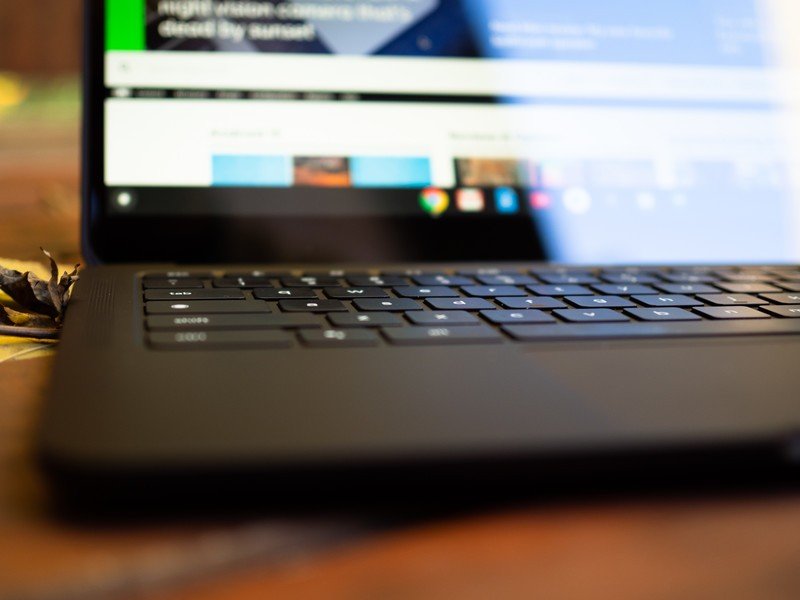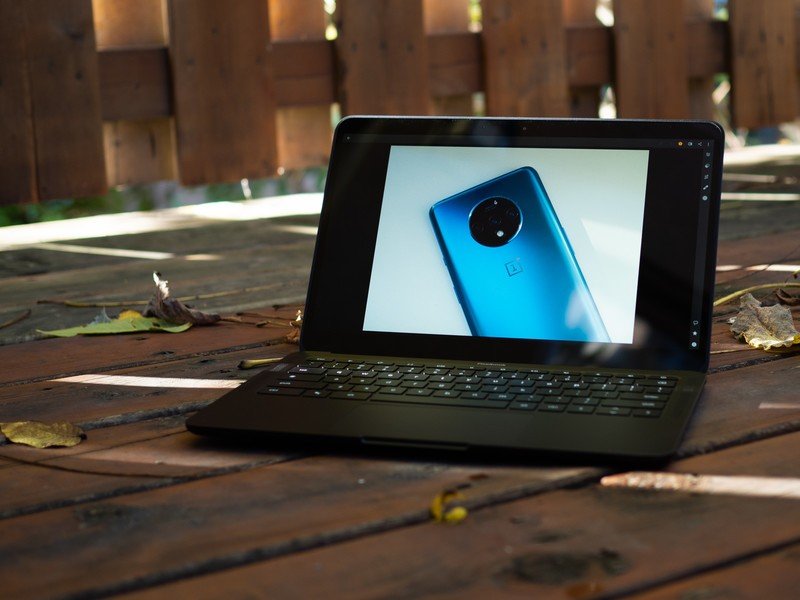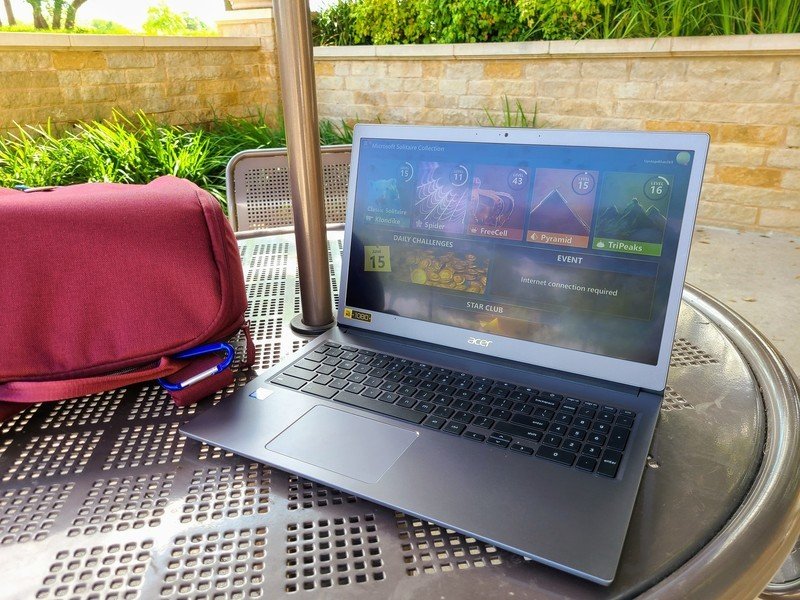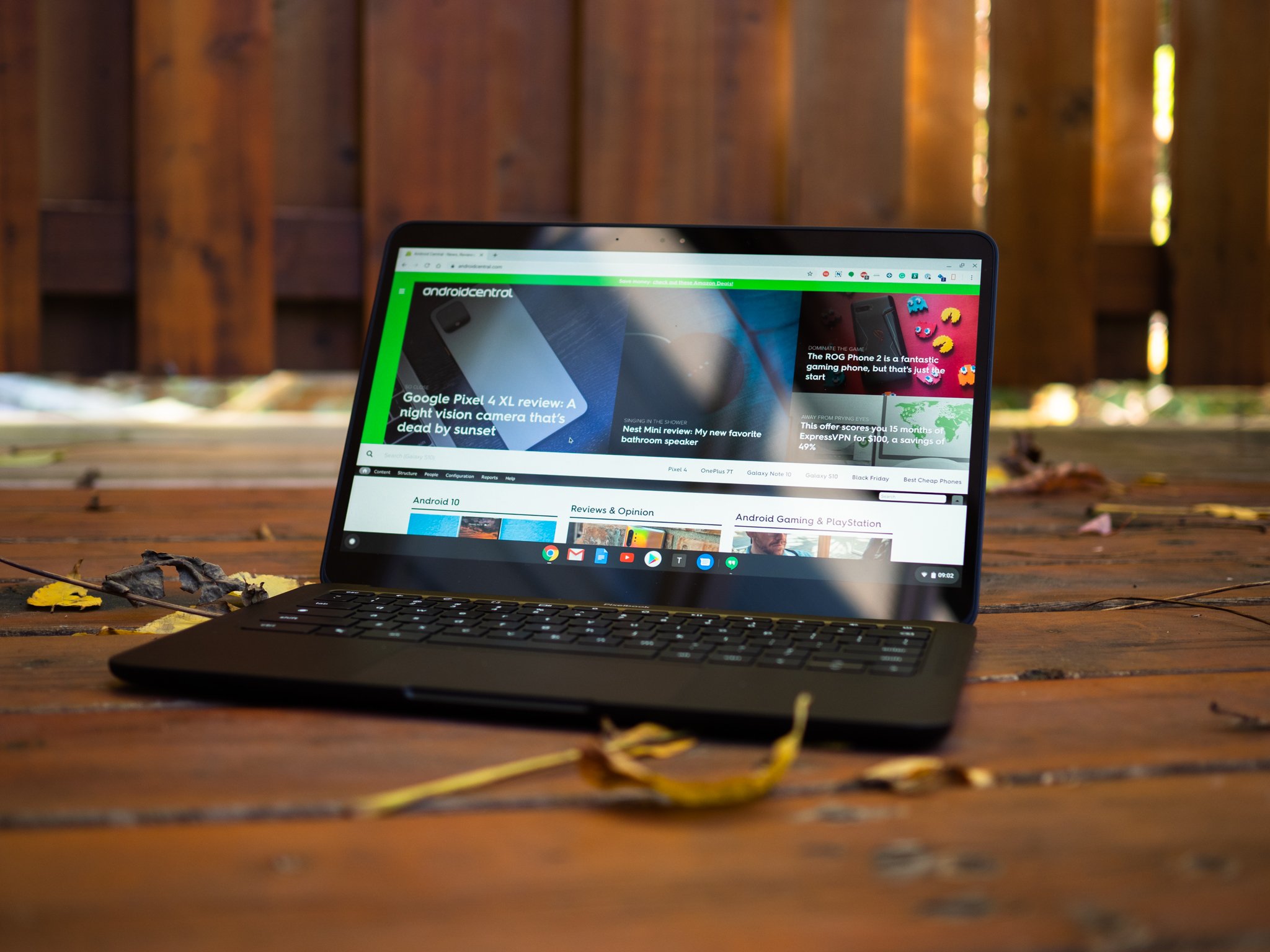Android Central Verdict
Bottom line: The Pixelbook Go is a stupendous all-round laptop that doesn't pretend to be anything different. It can't fold to become a tablet, but it can last nearly 10 hours on a charge and make typing feel fun again. This is the premium Chromebook to buy right now.
Pros
- +
Amazing keyboard, trackpad & speakers
- +
Excellent performance
- +
Commendable battery life
- +
Light and super portable
- +
Well-built
Cons
- -
Android apps still feel like a hack
- -
No biometrics
- -
Still expensive for a Chromebook
Why you can trust Android Central
It's an unwritten rule (hah!) that you have to write a review about a laptop on the laptop itself. So here I am, tapping away on the feather-smooth keys of the new Pixelbook Go, my favorite Chromebook in years and the one I'm happy to recommend to anyone who thought the OG Pixelbook was a bit too pricey.
But in a market where the best Chromebooks abound for half the price of the Pixelbook Go's cheapest model (this thing goes all the way to $1400 if you want a lot of power), is this really the Chromebook to get?
What I love about the Pixelbook Go

| Specs | Pixelbook Go |
|---|---|
| Display | 13.3 inches, 1080p 16:9 |
| CPU | Intel Core i5-8220Y 1.3GHz boost to 3.9Ghz |
| RAM | 8GB |
| Camera | 2MP 1080p |
| Ports | 2x USB-C |
| Dimensions | 12.2 x 8.1 x 0.5 inches |
| Weight | 2.4 lbs |
If you're the type of person who's for years dismissed Chromebooks because Chrome OS is a "lesser" operating system, try to leave your cynicism at the door. Yes, this is still the same browser-first experience it was when the first Chromebooks debuted in 2010, but the scope and scale of the project have changed significantly: Chrome OS can do practically anything well (though there are still some limitations, which we'll get to).
And doing anything on the Pixelbook Go feels like a privilege. The hardware could not look more different than its eponymous predecessor, but where the original Pixelbook was all angles, metal, and glass, the Go feels organic and seamless. It's as much a pleasure to hold as it is to unlip and use.
Such praise is due to Google nailing the fundamentals: the 16:9 display, while not the brightest, is plenty sharp for my needs (I'm using the 1080p panel that ships with the Core i5/8GB variant), and its touch response is perfect. The trackpad is around 20% larger than the one on the Pixelbook and just as capable, with spot-on responsiveness while scrolling, tapping, and gesturing. Of course, the keyboard is really the most fundamental aspect of any laptop, and Google nailed it.

Key travel is outstanding, with pillowy feedback and a matte finish that invites each finger press after press. This is fundamentally the same keyboard as on the original Pixelbook, but that's totally fine, since for two years that's been my favorite way to type an email, write a review, or tell a story.
I/O is limited, but both USB-C ports are capable of taking a 45W charge from the included power brick, which quickly re-ups the already-ample battery in short fashion. Like my colleague Michael Fisher, I achieved between seven and nine hours per charge while using the Pixelbook Go on the... damnit. You know what I mean. It's not quite the 12 hours Google claims, but my guess is that Google tested the laptop at lower brightness levels than I tend to use it.
Get the latest news from Android Central, your trusted companion in the world of Android
This is one of the best keyboards you'll ever type with.
Sound quality from the dual speakers is also outstanding, and I spent more than a few minutes with headphones unplugged or otherwise unconnected just jamming along to the music coming out of these things. Similarly, the 2MP webcam provides decent 1080p video quality for conference calls.

Overall, the Pixelbook Go just feels like a well-made laptop, one that would probably cost more if it ran Windows. The design is both subtle and opinionated — the choice to use magnesium as the shell and to paint over it a matte black finish is something I can't help but respect — and entirely Google. The ribbed bottom means it won't fall off surfaces as easily, and my coworker Jerry Hildenbrand would like me to remind you it also results in much more stable use while perched on his wheelchair. Accessibility FTW!
What else can I tell you? The computer is fanless, but it rarely gets hot under heavy use. I'm a bit worried for people who buy the Core m3 version — though my colleague Ara Wagoner, who's used that same chip in other Chromebooks says it's perfectly capable for 99% of people's Chrome OS workflows — but my review unit, a 1.3Ghz Core i5 with 8GB of RAM and 128GB of storage, stayed speedy throughout.

And here's what I did: I loaded tabs, lots of 'em; I used Lightroom, which is an Android app optimized for Chrome OS; I watched a bunch of YouTube; I wrote; I played a couple rounds of Chameleon Run; I streamed hours of music from Spotify's web app.
In other words, I did what I usually do on my daily driver, which happens to be a 2018 MacBook Pro. And yes, there are native apps on macOS and Windows 10 that perform better than the web- or Android-based equivalents on Chrome OS. Lightroom is a good example — it chugs along and feels awkward to use with a trackpad and keyboard — but it still works. I don't do a lot of video editing, but there are options to do that, too, on a Chromebook.
Let's talk about Google Assistant. There's a dedicated Assistant key on the Pixelbook Go, as there was on the Pixelbook. Assistant used to be Pixel brand-exclusive, but as of Chrome 77, which was released in late September, it's not. That means practically every Chromebook out there can take advantage of voice- or keyboard-activated help.

But because there's an Assistant key on the Pixelbook Go, I found myself using it all the time — to turn off lights, or check the weather, or send quick emails. I used it way more than I did on the Pixelbook, not because it was worse on that laptop but because I use Assistant way more now in general than I did in 2017. That's one of Google's desired outcomes, too: ambient computing means having an assistant everywhere and at all times.
At the end of my week's review period with the Pixelbook Go — and especially once I connected the same desktop keyboard and mouse combo I use with my MacBook — it felt almost identical to using my MacBook.
The main difference? That when I disconnected from all the cords and peripherals, I loved the 2.4-pound weight, the eight-hour battery, and the tremendous keyboard. Can't say that about my MacBook Pro, that's for sure.
What I don't like about the Pixelbook Go

This laptop's main criticism boils down to whether you value subtlety, nuance and material when associated with a Chromebook. As I said in the intro, you can find Chromebooks with more I/O — this one only has two USB-C ports, that's it — and better displays, with hinges that twist all the way around, or with pen support, or with slimmer bezels, or faster processors, or cheaper prices. There's a whole ecosystem of Chromebooks that supports every type of user.
It's an expensive Chromebook but a cheap Pixelbook, so who exactly is the Go for?
And I'm not really sure where this one fits in. It's a cheaper Pixelbook, yes, but it's still $649 for the cheapest model — and $849 for the one I'm using here. Sure, that's $150 cheaper than a similarly-spec'd Pixelbook, and this one comes with a newer, faster processor, but that's still a lot of money.

It's the same argument we've been having about Chromebooks for years, even as Google's spent time constantly improving the operating system itself while also being a pretty ambivalent ambassador for premium laptops.
It's kind of a bummer that the Pixelbook is just a clamshell and doesn't fold back into a tablet or tent, though I'll admit to never taking advantage of those particular gymnastics on any of my 2-in-1 notebooks. I don't love the fact that its display is in a 16:9 aspect ratio, nor that it's not as bright as it could be.
Android apps still feel like a hack on Chrome OS, and that's a problem.
There's an argument to be made, too, that the Pixelbook Go should be the laptop to popularize biometrics in the Chromebook ecosystem. Sure, the Pixel Slate had a fingerprint sensor, but no one actually bought that thing; it would have been nice to see something similar embedded into the power button, for instance.

I also don't love the fact that it's been three years and Android apps still feel like an afterthought on the platform. For every app or game that performs well, I'll find one that feels scrounged together from tape and lint. For example, I prefer to use native email apps over the Gmail site, so I hoped my Android client, Spark, would work well on Chrome. It... doesn't. It's slow to load, even slower to navigate, and regularly force-closes.
While it's understandable that some highly complex Android apps would run with difficulty on a Chromebook given they're emulations run inside a sandbox, this is an email client. An email client should be able to run just fine on a Chromebook. But I digress.
Pixelbook Go Competition
Updated September 2020

Since this review was written, there has been a massive influx in high-quality premium Chromebooks, including options from Acer and ASUS, which has had the effect of dulling the Pixelbook Go's shine somewhat.
When I wrote this review in October 2019, Project Athena Chromebooks were not yet ubiquitous, and 10th Gen Intel chips were still a few months away from debuting on Google's platform. Since then, the market has grown more competitive than ever, and even though it's difficult to find a Chromebook right now due to COVID-related shortages, the Pixelbook Go, as good as it is, doesn't quite offer the value it once did.
Should you buy the Pixelbook Go?

I really like this machine, as I did the original Pixelbook. I appreciate that Google's doing what it can to lower prices without sacrificing build quality and performance, and I'm sure that the vast majority of people buying this thing will be elated with the performance from the entry-level Core m3 version.
4 out of 5
Chromebooks aren't dinky little word precessors anymore, and the Pixelbook Go reflects that attitude in 2019. It's beautifully made and precisely designed, and it does everything I need it to with a better keyboard, better battery life, and a genuinely fun user experience.

Daniel Bader was a former Android Central Editor-in-Chief and Executive Editor for iMore and Windows Central.


